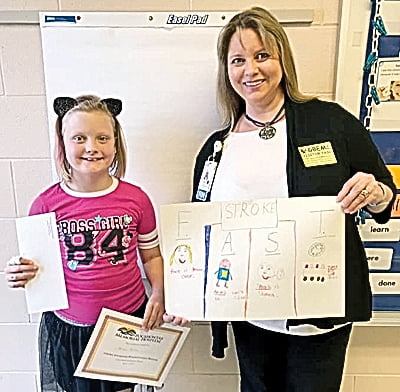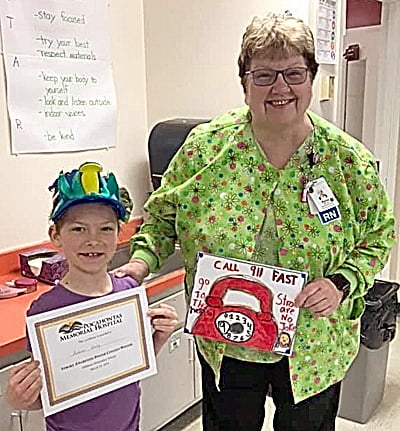

Susan Wilkins
PMH Special Projects
Pocahontas Memorial Hospital launched a stroke awareness education initiative last fall to help our community understand the risk factors and symptoms of stroke, a leading cause of death and serious long-term disability in the United States.
“Time is crucial in the treatment of stroke, as on average, every 40 seconds someone in the US has a stroke and roughly every four minutes someone dies from a stroke,” Kyna Moore, Chief Nursing Officer at PMH said. “The earlier a stroke is recognized and the patient receives medical attention, the greater chance of recovery.”
This spring, PMH continued its education efforts by asking for help from first through fifth grade students in the county. Students at each of the schools were asked to make posters highlighting the risk of stroke and the FAST approach.
“If you suspect a stroke, remember the word FAST,” Moore said. “F is for face – is your face drooping? A is for arms – can you lift both arms? S is for speech – are you slurring your words? And T is for time, call 9-1-1 immediately because with stroke, time is imperative.”
A winning poster was selected from each school that had entries in the contest.
Autumn Hively, a student at Hillsboro Elementary School, was awarded $50. Her classroom teacher, Nicole Rose, also received a monetary award.
Haiven Brown, the winner at Green Bank Elementary School, also received a $50 award.
Her teacher is Marsha Beverage.
Posters have been displayed in the hallway at PMH all spring, and pictures may be found on the hospital Facebook page.
Strokes occur when a blood vessel carrying oxygen and vital nutrients to the brain is either blocked by a clot or ruptures. When this occurs, part of the brain is deprived of blood and oxygen, destroying millions of valuable nerve cells within minutes.
The primary stroke symptoms include:
• Sudden numbness or weakness on one side of the face or facial drooping;
• Sudden numbness of weakness in an arm or leg, especially on one side of the body;
• Sudden confusion, trouble speaking, or understanding speech;
• Sudden trouble seeing in one or both eyes;
• Sudden trouble walking, dizziness, loss of balance, or coordination;
• Sudden severe headache with no known cause.
Leading a healthy lifestyle, including lowering risk factors like high blood pressure and weight, can help reduce your stroke risk.
For more information visit strokeawareness.com


